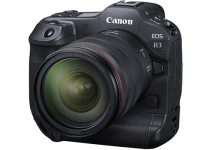In this over-saturated prosumer camera market, it becomes harder and harder to pick only one camera for your next production. As the market leaders in the segment Sony, Canon, and Panasonic prepare to roll out the next batch of new cameras, three of their existing models have specifically won the hearts of indie filmmakers already.
This lineup includes the Canon C200, Panasonic GH5, and Sony A5600. All of the cameras have been praised for providing superb image quality at a relatively low cost. With a highly established reputation attached to each product, it might be useful to know which among the three rivals can prevail in comparison to some of the most challenging shooting criteria set by filmmakers.
That’s exactly what we are going to find out in the next video produced by filmmaker Max Yuryev that compares the C200, GH5, and A6500 in four aspects – autofocus, low-light shooting, and image detail in both 4K and while shooting at 120 frames per second.
For the autofocus test, Yuryev placed both cameras side-by-side to see how well they could track a moving object within the frame. In order to make a fair comparison, he attempted to match focal distances and settings for each camera. In the end, one thing was for sure – the Panasonic GH5 was in a tier below the C200 and A6500.
While the camera eventually did manage to track the subject and pull focus, its overall performance was slow and unreliable. On the other hand, both the C200 and A6500 performed flawlessly in the autofocusing test, successfully tracking the moving subject and pulling focus in an acceptable timeframe.
In the low-light shooting scenario, all three contenders were again placed side-by-side allowing to gauge the image quality of each camera outdoors in the dark looking over a skyline. The devices were recording while using the same lens and raised to the appropriate ISO settings to determine the amount of noise in the final image.
After looking at the results, it seems that the A6500 would be the winner in this case, as it was the only competitor on the list that was able to produce borderline usable footage at an ISO setting of 12800. Every other camera at that setting faltered with atrocious colored noise, a significant sign of disapproval for any serious production.
The last series of tests sought out to determine image detail and sharpness in 4K alongside filming at 120fps (at the supported resolution per camera). When shooting at 4K, the Sony A6500 retained the most image detail with minimal signs of aliasing and moiré, although the C200 and GH5 still performed reasonably well. In fact, the difference between all three cameras could be considered negligible, but if you want to be nitpicky, the A6500 takes the cake.
For the test regarding image quality when shooting slow-motion video, the GH5 managed to defeat its rivals in this category. Looking at the test footage, you can see how the Micro 4/3 camera picked up more detail and produced less visual artifacts compared to the C200 and A6500.
While it may be safe to say that the Sony A6500 performed better in most of the situations tested above, it does not mean it is the best camera for you whatsoever. Every device is crafted differently and has its pros and cons. So, if you’re looking for the right one for your next production, testing each available option in advance is still going to be your best bet.
[source: Max Yuryev]
Order Links:
Panasonic Lumix DC-GH5 Mirrorless Micro Four Thirds Digital Camera (B&H, Amazon US)
Canon EOS C200 EF Cinema Camera (B&H)
Sony Alpha a6500 Mirrorless Digital Camera (B&H, Amazon US)
Disclaimer: As an Amazon Associate partner and participant in B&H and Adorama Affiliate programmes, we earn a small comission from each purchase made through the affiliate links listed above at no additional cost to you.



